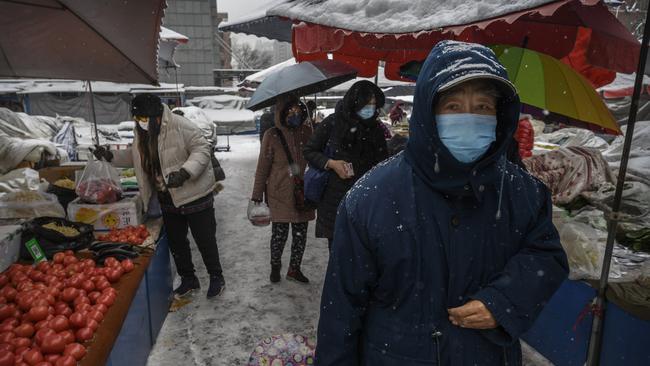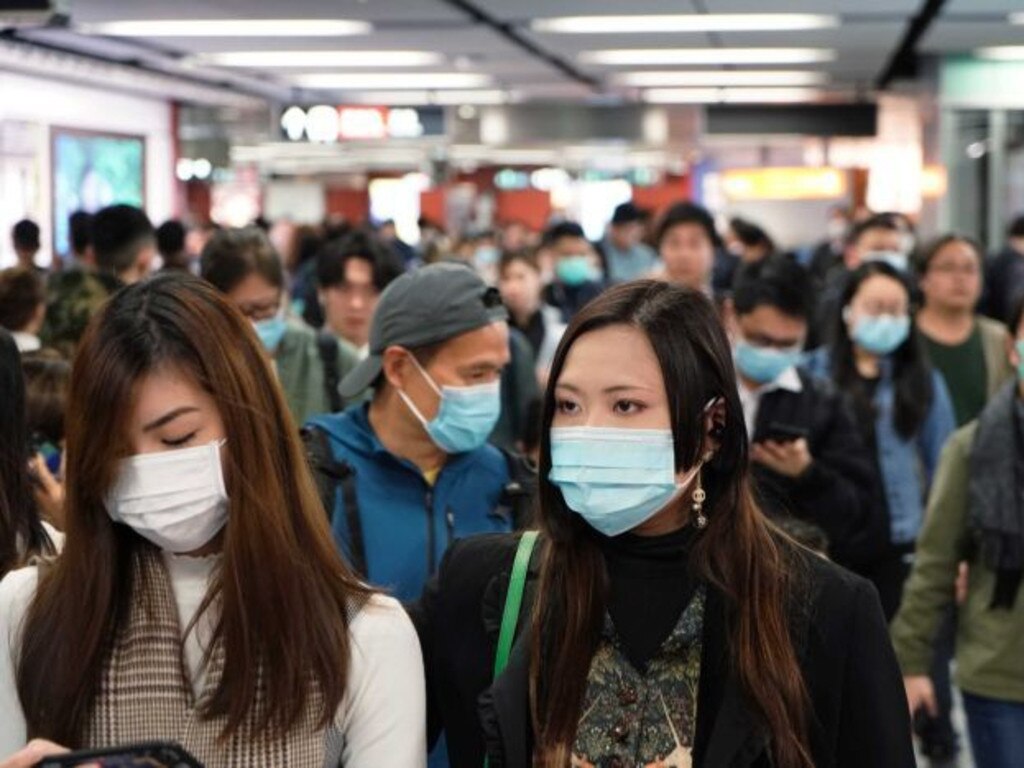Coronavirus: not just another pandemic China has given to the world
It can’t be that hard for a totalitarian regime, so quick to lock people away for promoting democracy, to put a stop to the dangerous cultural practices that led us here.

Two days ago, a screenshot of what appeared to be a news item was hustled around social media. “Cocaine kills coronavirus.” It was a fairly obvious hoax, a confected snap taken from an online generator.
If only it was that easy. We’d simply have to extract Liam Gallagher’s haemoglobin and there’d be a vaccine available in days.
Of course, cocaine is not a cure for anything unless you consider having too much money and not enough sense an illness.

Elsewhere, there have been outrageous claims of cures and treatments including a rumour that fennel could help vaccinate people against the virus. This led to a mad surge of sales of the ubiquitous herb from Brazil all the way to the Cape Verde islands.
The world has an unhappy history with pandemics emanating from China. This one appears to be a case of state controlled slow release of information, a government slow to listen, slow to act.
News came today of the death of the whistleblower Li Wenliang, the ophthalmologist who tried to inform the world of the seriousness of the outbreak only to be ‘silenced’ by the provincial government in Wuhan. State controlled media couldn’t even get its story straight about his death.
This is the inherent problem with totalitarian governments. While they have the power and force to control and isolate a viral outbreak, they prefer to suppress crucial public information in order to save face or prevent economic loss.
Some reliable sources from China are reporting that the official death toll has been calculated only from those who have been hospitalised. Others, it is said, who have died in their homes have not been counted.
Officially, the death toll stands today at 565 with over 20,000 infected but it is certainly a good deal more.
The virus still has no name. The World Health Organisation ascribed the temporary moniker, 2019-n-CoV. 2019 is the year it first loomed. N for the novel or new form of the virus with the connection established as a form of coronavirus – CoV.
It has been left to an obscure group known as the International Committee on Taxonomy of Viruses to come up with one. The committee has been told to pull their fingers out and get cracking.
This might not seem as important as quarantining and treatment or research to develop a vaccine, but it remains significant. If colloquialisms are allowed to prevail, there can be some grim outcomes.
In 2009, the H1N1 virus became known colloquially as “swine flu” and led to the unnecessary slaughter of millions of pigs. The virus was transmitted from human to human.
Coronavirus is a family of viruses that can cause respiratory illness and includes the common cold. Almost all of us have had one form of it or another in our lives. If we trundle off to the doctor with a cold, we will almost certainly leave with a script for one form of antibiotics or another which can only control the infectious symptoms, not the virus itself. Here we are in 2020 and there remains no cure for the common cold.

There are no accepted anti-viral treatments or vaccines for any form of Coronavirus, let alone 2019-n-CoV.
Driven by official Chinese intransigence, epidemiologists are struggling to determine the mortality rate of 2019-n-CoV, but it is probably quite low.
This is both good news and bad. Viral outbreaks with high mortality rates like ebola burn out quickly. If a village with a population of 100 people becomes subject to infection, the incubation period is brief and virtually the entire village can be wiped out in a matter of days, horribly by haemorrhagic fever. But it ends there. Ebola is almost too lethal for its own good.
A viral epidemic with a lower mortality rate, perhaps one in ten, can be transmitted more widely. The incubation period is longer. People who are infectious may not necessarily present with symptoms, allowing the virus to infect a greater number of people over a larger area. In the 21st century, this does mean jumping on planes and moving around the world.
The method of transmission of 2019-n-CoV is pneumonic with transmission occurring through droplets of fluid containing the virus passed by coughing or sneezing, just like the common cold. Transmission may also occur from fomites, where people may touch infected objects like tissues and then touch their mouths or eyes. There is a possibility of infection from faecal matter, but this appears to be quite low.
2019-n-CoV is unlike measles which can remain airborne for long periods of time. For example, a person infectious with measles sitting at one end of the MCG can infect a person at the other end of the ground. This is one very good reason to vaccinate children.
2019-n-CoV incubates in a subject for what is thought to be somewhere between two and 14 days with low rates of transmission in that period.
Perhaps the most important point to make is the outbreak was entirely preventable.
The creation of the virus and its transmission to humans is known as zoonotic, shifting from one animal species to our own. The novel form of Coronavirus has been found to be 96 per cent identical at whole genome level to bat coronavirus.
The lessons from SARS (Severe Acute Respiratory Syndrome) went substantially unlearned. Ground zero for the pandemic is a market in Wuhan, the Huanan Seafood Market where animals were kept in cages. The accepted theory is the virus transferred and mutated from bats, possibly via civets and onwards to humans. This was the case with the SARS pandemic of 2002, at least in terms of a bat to human transmission.

These cultural practices should have been curtailed after the SARS outbreak. Cultural practices of storing animals not normally fit for human consumption is not just cruel, it is incredibly dangerous.
In China, the emerging middle classes tend to frown on it. When ground zero of 2019-n-CoV became known thousands of Chinese took to Weibo to denounce the practice of eating exotic animals.
It is time the practice ended.
It can’t be that hard for a totalitarian regime, so quick to lock people away for promoting democracy or for maintaining a form of ethnic or religious identity, to tell people to stop eating bats, cats and bears.
For the rest of us, the response must be informed and sensible.
We’ve probably all seen too many movies of the Outbreak type for our own good. A pandemic conjures up all sorts of existential threats, sole survivors wandering through vacant cities. Eric Idle with a wheelbarrow.
But when it comes to the reality of looming pandemics, people for the most part accept the science. Still, there are always a few fruit loops about who think they can overpower a new viral outbreak by macramé-ing their own muesli, drinking their own urine at room temperature or whatever bizarre foodie trend du jour is on the go.
It’s rare to see someone say, “You know, I’m not a virologist but …” We let experts make the calls and act accordingly. Funny that.







To join the conversation, please log in. Don't have an account? Register
Join the conversation, you are commenting as Logout